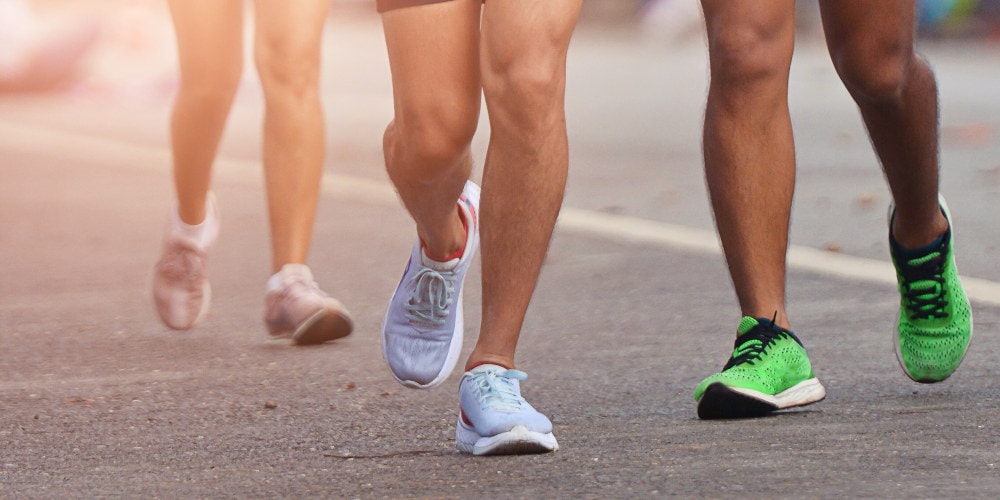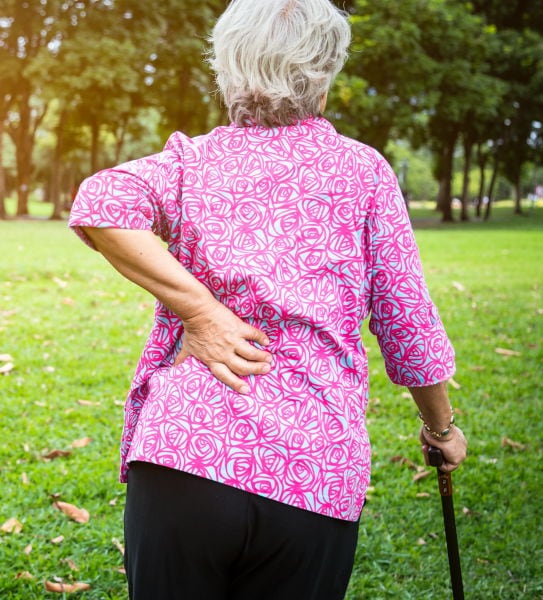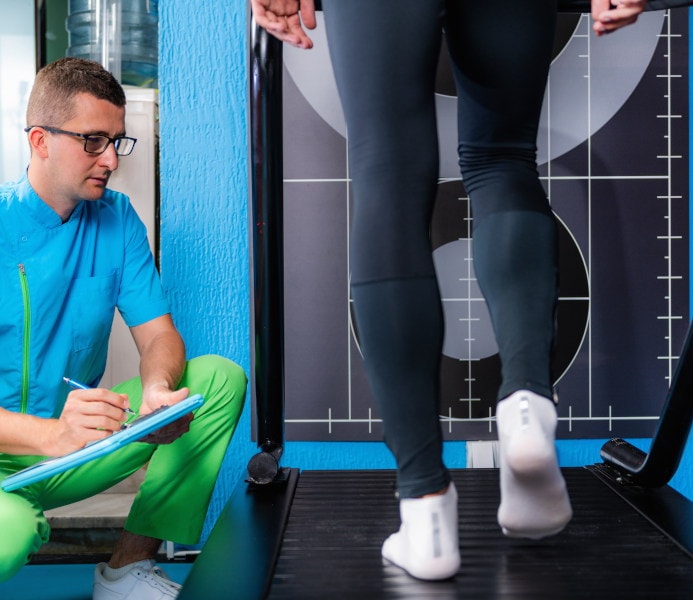What is gait?
A person’s gait is the pattern that they walk. Walking might seem like a natural thing that we all learn when we begin to toddle. That’s partially true, but as we get older, our walk becomes increasingly informative about our physical and mental state.

Doctors for gait disorders
Podiatrists at the University Foot and Ankle Institute (UFAI) are experts at analyzing patient’s walking abnormalities. Walking is a complex physical and mental activity that requires subconscious coordination between 200 muscles and countless nerves — and that’s just for one step.
Consider that most general practitioners’ untrained eyes won’t pick up on your gait’s subtle cues, and possible diseases may go unnoticed.
If your gait changes, seek immediate medical care. A diagnosis is needed to exclude stroke, cerebral hemorrhage, acute infection, cerebellar ataxia, or the rare neurological complications of varicella (chickenpox).
What causes gait problems?
Though gait problems tend to become more noticeable as a natural part of aging, the root cause of walking gait abnormalities often begins earlier in life. Neurological medical conditions may go unnoticed until you begin to have problems with gait and balance, while physical walking disorders may begin in the womb.
The causes of gait disorders include neurological conditions (sensory or motor impairments), orthopedic problems (osteoarthritis and skeletal deformities), and medical conditions (heart failure or respiratory problems).
There are many problems that can manifest as an unusual gait:
- Arthritis in hips, knees, feet, or ankles
- Corns, calluses, skin sores, or warts
- Muscle weakness due to myopathy
- Infections
- Vision problems
- Neurological conditions
- Broken bones
- Problems with the inner ear
- Conversion disorder
- Atypical development of muscles or bones in the foot
Types of walking problems and what they can tell us

1. Waddling — back disease
Waddlers shift their upper body from side to side with each step. A walking pattern with a waddle could indicate a degenerative lower back disease or spinal muscle atrophy, especially in aging patients.
Degenerative disc disease is a type of osteoarthritis of the spine, and it occurs when the discs between the vertebrae wear down or become fragmented or herniated. The nerves in the lower back are squished, which blocks some of the signals between your brain and your buttocks. Your gluteus muscles are unable to lift your pelvis to keep your hips aligned as you walk, which causes a waddling motion.
2. Sticky feet — dementia
Feet appearing to “stick” to the floor — as though pulled by magnets — is often a sign of dementia or Parkinson’s disease. The pattern may begin as just a cautious and unsteady gait — and may be dismissed as a symptom of old age. However, with dementia, you will see the patient’s steps degenerate to the characteristic “magnetic gait.”
Dementia impairs higher-level brain functions, which hinders signals down the spine that coordinate walking movements. Patients with dementia and Parkinson’s tend to slow down and have a difficult time lifting their feet to clear the floor. They may take shorter steps, stoop, or lean forward into their walk as well. Parkinson’s patients may also experience characteristic tremors with their movements.
3. Swaying — brain damage
If a patient looks like they might be drunk while walking, this can alert the doctor to possible brain dysfunction in the area that controls voluntary muscle movement and coordination. The cerebellum may be damaged from excessive alcoholism, a tumor, or even a stroke.
Patients with an ataxic gait may stagger or sway from side to side, have a hard time judging distances or knowing when to stop walking, and may be more susceptible to falling.
4. Scissor gait — damage to the spinal cord
If a patient’s knees cross over each other while walking, they may have damage to the spinal cord. The spinal cord is a critical pathway for the brain to communicate with the legs, and any damage to it can cause stiffness and weakness in the leg muscles. This results in the knees crossing in front of each other and the toes pointing inward with each step.
The scissor gait is associated with spinal cord damage resulting from traumatic injuries — typical in sports or traffic accidents — and with nervous system diseases such as multiple sclerosis, peripheral neuropathy, muscular dystrophy, and cerebral palsy. This gait can put the walker at risk of falls.
5. Dragging the foot — nerve or muscle injury/disorder
Also known as foot-drop, antalgic gait, or steppage gait, dragging the foot results from an inability to flex the foot upwards. This inability could stem from weakness or damage to the muscles or nerves that aid in dorsiflexion. Patients with foot-drop may raise their knees higher than usual to avoid dragging their feet or swing their legs around to get their toes out from under them.
The peroneal nerve, one extension of the sciatic nerve, leads from the back of the knee to the shin. If it’s damaged — such as during surgery or a sports injury — it may cause numbness or paralysis in the top of the foot.

6. Propulsive gait — Parkinson’s disease
Characterized by a stooping, rigid posture, the head and neck are bent forward. Steps tend to become faster and shorter. This gait may indicate Parkinson’s disease.
Propulsive gait can also be caused by medications or toxins (such as carbon monoxide poisoning). So make sure you’re contacting your doctor if your gait has changed.
7. Spastic gait — cerebral palsy/multiple sclerosis
People with cerebral palsy or multiple sclerosis generally walk with one leg stiff and dragging in a circular motion. Poor balance is often experienced with this gait.
8. High-stepping gait — spinal abnormality
With this gait, one leg is lifted and then drops, with the toe pointing down and scraping the ground. Spinal problems such as stenosis or a herniated disc may cause this type of gait.
9. Limping gait — joint injury
Favoring one leg often means there is an injury, which can be anything from a strained muscle, sprained ligament, tendonitis, arthritis, or leg length differences.
10. Toe walking — tight muscles
Toe walking is a common gait abnormality, particularly in young children who are just starting to walk.
Many cases of persistent toe walking run in families or are caused by tight muscles. In some cases, toe walking may indicate a neuromuscular disorder such as cerebral palsy, or it could be a sign of developmental dysplasia.
How UFAI treats gait abnormality symptoms
Though we have a menu of possible remedies, treatment depends on the type of abnormality and the underlying cause of the problem. Typically, treatment is a combination of:
- Medicines
- Mobility aids (assistive devices)
- Physical therapy
- Surgery
- Splints
Why trust UFAI with your walking gait issues?
For almost two decades, the podiatrists at the University Foot and Ankle Institute have helped patients with all types of foot care. When developing a treatment plan for your condition, our podiatrists veer away from one-size-fits-all solutions. Instead, each of our patients is given individualized care for their specific injury and lifestyle. Our goal is to get patients back to their normal activities in as little time and with the least invasive treatment possible.
We use research-based standards based on age to evaluate a person’s gait speed. We look at how a person’s medical history and gait speed change over time — a decrease from one year to the next is a sign that there may be an underlying condition that needs further exploration or treatment.
You don’t have to live with an abnormal gait. With decades of combined experience and the highest success rates in the nation, we have effectively treated over 200,000 patients. Foot and ankle pain is not normal. And ignoring it will likely cause your condition to worsen and become harder to treat.
For a consultation, call (877) 736-6001 or make an appointment online now.
Our podiatrists take patients’ safety seriously. Our podiatry facility’s Covid-19 patient safety procedures exceed all the CDC’s coronavirus pandemic recommendations. Masks are always required in our institutes.
University Foot and Ankle Institute is conveniently located throughout Southern California and the Los Angeles area. Our foot doctors are available at locations in or near Santa Monica, Beverly Hills, West Los Angeles, Manhattan Beach, Northridge, Westlake Village, Granada Hills, Valencia, and Santa Barbara.
- Is Bunion Surgery Covered By Insurance? - January 28, 2025
- Top 10 Non-Surgical Treatments for Morton’s Neuroma - January 20, 2025
- Moore Balance Brace: Enhance Stability and Prevent Falls for Better Mobility - December 16, 2024
What’s up everyone, it’s my first visit here and this was really helpful article for me. Keep it up and thanks.
Sometimes the way they walk also might be because of how they have got used to since they were small. Anyways, a very informative post, keep it up.